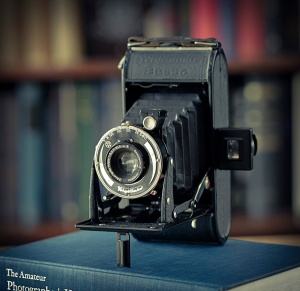
Generally speaking, in the world of marketing there are relatively few brands that have real staying power – Ford Mustang, Smith & Wesson, Coca-Cola, Volkswagen Beetle.
When it comes to photography you’ve got Kodak Brownie, Polaroid Land, and Nikon Photomic. And you also have the Voigtlander Bessa. Voigtlander is arguably the oldest brand associated with photography. It was founded in Vienna in 1756 as an optical company. In 1841 they produced the first all-metal daguerrotype camera and soon after that they were producing wet-plate cameras. So, the Voigtlander name has been around forever, and one particular model camera they produced has been in existence – in one form or another – since the early 1930s.
That camera is the Voigtlander Bessa.
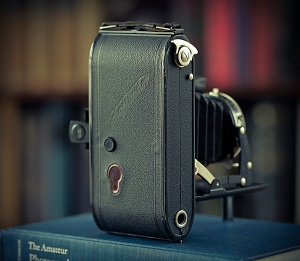 This by no means implies that the Bessa hasn’t changed over the years. Just the opposite would be true. The first Bessas were folding roll-film cameras that shot 120 size film in the 6x9cm format. The current Bessas are 35mm rangefinders. These two cameras are nowhere near being alike. Nor are they even made by the same company. The new Bessa cameras are made in Japan by Cosina. But the Voigtlander Bessa name has such a rich history associated with it that the Japanese licensed its use. And you thought Kodak had been around for a long time…
This by no means implies that the Bessa hasn’t changed over the years. Just the opposite would be true. The first Bessas were folding roll-film cameras that shot 120 size film in the 6x9cm format. The current Bessas are 35mm rangefinders. These two cameras are nowhere near being alike. Nor are they even made by the same company. The new Bessa cameras are made in Japan by Cosina. But the Voigtlander Bessa name has such a rich history associated with it that the Japanese licensed its use. And you thought Kodak had been around for a long time…
One day I hope to own one of the new rangefinder Bessas. I hear they are fantastic. They are also a little pricey. Not Leica-pricey, but still more money than I’m comfortable spending on a film camera.
No, the Bessa I have is one of the original folding cameras. It appears to be around 1937 vintage and shoots 120 film in 6×9 format. It was in near-mint shape when I received it and included a nice leather case.
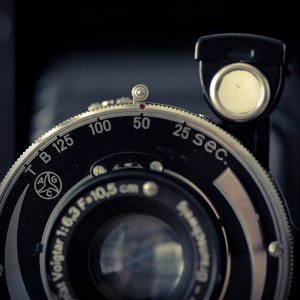 The Bessas of that era had several different lens/shutter combinations and, therefore, varied in price. Mine has the Voigtar 10.5cm f/6.3 lens – which I think was the more entry-level version. The shutter has limited speeds – 25, 50, 100, 125, B, and T – but that is still more complex that many other cameras of the time. The shutter is cocked via a small lever on the shutter selector dial. And you must re-set it after each exposure.
The Bessas of that era had several different lens/shutter combinations and, therefore, varied in price. Mine has the Voigtar 10.5cm f/6.3 lens – which I think was the more entry-level version. The shutter has limited speeds – 25, 50, 100, 125, B, and T – but that is still more complex that many other cameras of the time. The shutter is cocked via a small lever on the shutter selector dial. And you must re-set it after each exposure.
Also included on the shutter is a self-timer, which was fairly unheard of at the time. Have I tested it? Heck no. If there’s one thing I’ve learned from piddling around with old cameras that have manual shutters, it’s NOT to mess with the self-timer. There’s probably no easier way to wreck a working vintage shutter.
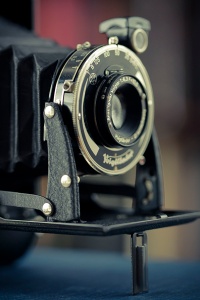
One thing you would expect from a German camera would be that the mechanics should be smooth and tight. And the Bessa is no exception. You can tell this is a quality-built camera just by holding it. Everything is machined to exacting tolerances – there are no loose or “wiggly” levers or buttons here.
This camera also has a good, usable range of apertures to choose from as long as you’re shooting out-of-doors in daylight: f/6.3 – f/22. They are selected by a lever on the shutter and each stop is “click-less”, making it easy to choose any size aperture along that scale.
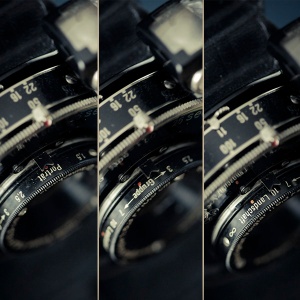 Scale-focusing (guessing…in other words) is the method in use for this particular model. Meaning you estimate the distance between you and the subject and set the lens accordingly. Having used an SLR all my life this takes a LOT of getting used to. The lens is marked in meters – also making it difficult for an American to determine distance – as well as three settings for typical subject use: Portrat, Gruppe, and Landschaft. I don’t know German, but I think I can figure these out.
Scale-focusing (guessing…in other words) is the method in use for this particular model. Meaning you estimate the distance between you and the subject and set the lens accordingly. Having used an SLR all my life this takes a LOT of getting used to. The lens is marked in meters – also making it difficult for an American to determine distance – as well as three settings for typical subject use: Portrat, Gruppe, and Landschaft. I don’t know German, but I think I can figure these out.
The camera sports two different finders: a waist-level “brilliant” finder and a pop-up frame. In use, I find the waist-level finder of very little value even though it technically can be more accurate. The image is just too small, and you have to look at it at just the right angle to see anything. The frame finder is pretty low-tech, but does a decent job at being accurate enough to use for composition. Just be aware of parallax issues when shooting subjects up close.
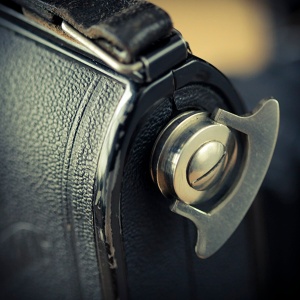
In use, the camera is quite capable of making technically good photographs. However, it does demand your attention in order for it to do so. Nothing is automated and none of the processes are interconnected. You must determine the exposure (using the Sunny 16 Rule or handheld meter); set the aperture; set the shutter speed; cock the shutter; focus the lens by estimation; use one of the finders for composition; and release the shutter; afterwards being sure to carefully advance the film to the next frame by watching through the red frame-counter window. Then you start over for the next shot – but don’t go crazy with it since you’ll only get eight exposures on one roll of film.
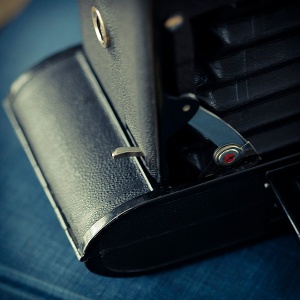
So, what’s my take? Well, I hardly ever meet a camera that I don’t like. And this is no exception. It’s a wonderful, well-built machine. And even though it can be exhausting with all the manual controls, it makes some surprisingly good, sharp images. Not bad for an almost 80-year-old camera!
Below the Technical Specs you’ll find a few shots that I made with the camera. You’ll also see that when I purchased this camera it came with a cool bonus – undeveloped film! Those shots are also included below.
Technical Specifications
Original List Price (1937): $21.50 (with Voigtar f/6.3)
Price in 2015 Dollars: $362.43
Manufacturer: Voigtlander
Model: Bessa
Year Introduced: 1929
Film Format: 120 Film, 8 exposures, 6×9
Lens: 10.5 cm Voigtar f/6.3
Shutter: Prontor Leaf
Self-timer: Yes
Shutter Speeds: 1/25, 1/50, 1/100, 1/125, B, T
Shutter Release: on baseboard
F/Stops: f/6.3 – f/22
Built-in Meter: No
Film Speed/ASA Range: N/A
Flash Sync: No
Film Advance: Manual via Winder on camera bottom
Frame Counter: Manual via Red window on back
Double-exposure capable: Absolutely! Just forget to wind the film
Finder: Frame Viewfinder, Waist-Level “Brilliant” Finder
Mirror: N/A
Other points of note: Hinged back with Pressure Plate, two Tripod sockets,
Sample Photographs from the Voigtlander Bessa
Exposure for these photographs was determined using the *Free* Pocket Light Meter App by Nuwaste Studios. Which is pretty cool since a real hand-held meter can set you back a few hundred bucks.


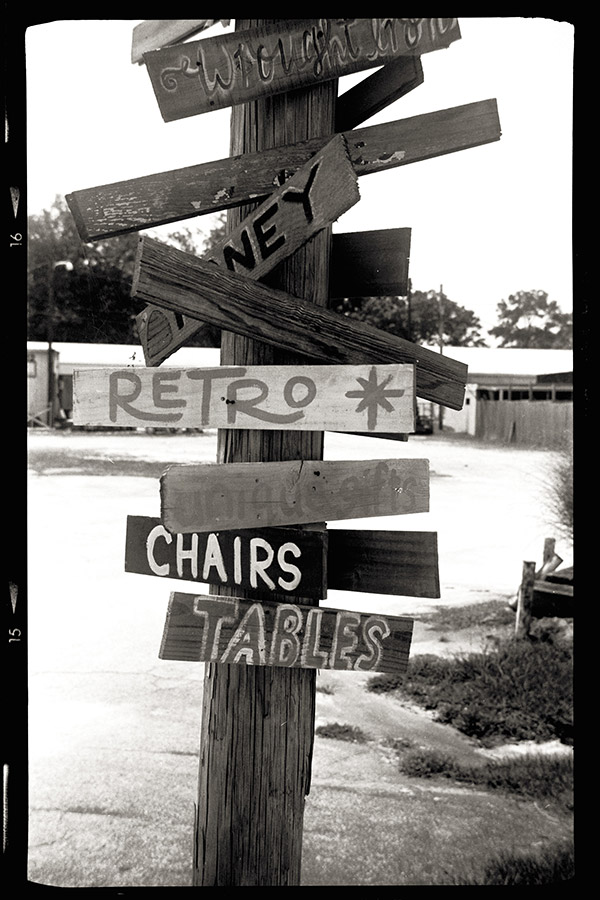





Now for the Found Photos…



All text and photographs on this website (other than found-photography and otherwise noted) are © 2014-2021 Steven Broome. All rights reserved.

Very interesting – look forward to your next post!
LikeLiked by 1 person
Nice post, and a nice camera. I picked up a post-war Voigtlander Bessa 1 with Vaskar f/4.5 lens on eBay, and later a clip-on rangefinder to help with focussing. Its fun having a large format camera that just about fits in a pocket, and produces big 6×9 cm negatives. The Epson Perfection flatbed scanners allow high resolution scanning of these negatives quite cheaply. Its a change of pace to take the time to compose the photo with an old camera, and to get back into the darkroom to develop the negatives. Enjoy the camera!
LikeLike
Thanks, Ed! You know, I think what surprised me the most about this camera is the size when folded. Very portable – and as you said – almost pocket sized. And I agree with you on the scanner, the Epson Perfection series is excellent. Currently using a V750 Pro.
LikeLike
i like your site!
LikeLike
Just found and bought from Goodwill, Maine on eBay a Voightlander Bessa 120 camera in very close to mint condition. This one seems to be in perfect working order with amazing like new cosmetic condition. The lens according to online information was made in 1937 a Viotar f 3.5 10.5cm made by Voightlander and contained in a Compur Rapid leat shutter T B 1sec to 1/400sec.
I’m unable to walk very far owing to a problem spine but have ordered some Ilford 120 film to test out this very lucky acquisition. I hope the fact that the back of the camera has a system of internal covers to shut out light through the red lenses of the frame counter windows when not winding film is sufficient to avoid fogging the film in careful use since it’s been impossible to find real vintage orthographic (red insensitive) film and panchromatic is all I can find..
Weather permitting, I should be able to get outside on my powerwheelchair soon to try out the camera on the early blooms of springtime hereabout.
Del Keener, SW Rhode Island
LikeLike
Hi Del! I think you’ll be fine with any of the modern 120 film. I’ve found the film’s paper backing to be sufficient for the “red windows”. I’d love to find a Goodwill treasure like that! The Voightlanders are great. Let me know how it all turns out.
LikeLike
Great Article, thank you. I’ve got mine today on a flew market and works like new:-)
LikeLike
Thanks! That’s a lucky find, for sure! Enjoy it!
LikeLiked by 1 person